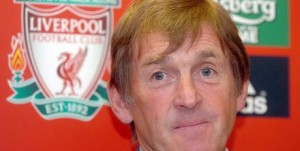Lets not fool ourselves LFC doesnt appoint THE legend for the interim , Point is its his interim.
Daglish until he feels like walking away.
Daglish until he feels like walking away.

 [Key: Quality 0-10; Age = -1 point for every year from 28 onwards, eg -4 for 31 year-old, and -1 point from 30 onwards for keepers, eg -4 for 33 year-old; Adj = adjustments for players either exceptionally fit/unfit for their age, or soon to leave; Inheritance = total out of 10. Excludes players not part of first team picture.[/font]
[Key: Quality 0-10; Age = -1 point for every year from 28 onwards, eg -4 for 31 year-old, and -1 point from 30 onwards for keepers, eg -4 for 33 year-old; Adj = adjustments for players either exceptionally fit/unfit for their age, or soon to leave; Inheritance = total out of 10. Excludes players not part of first team picture.[/font]
Comment